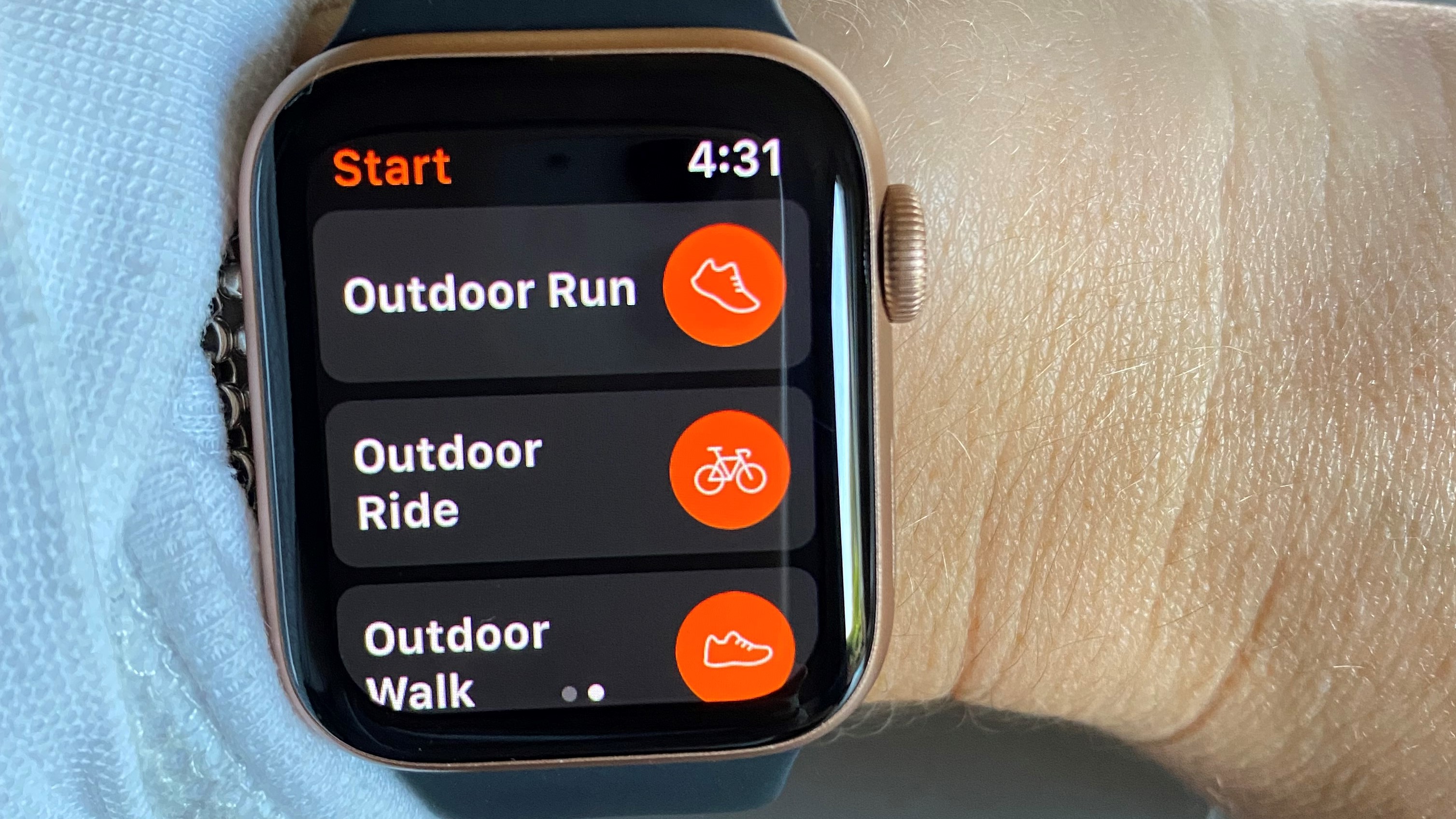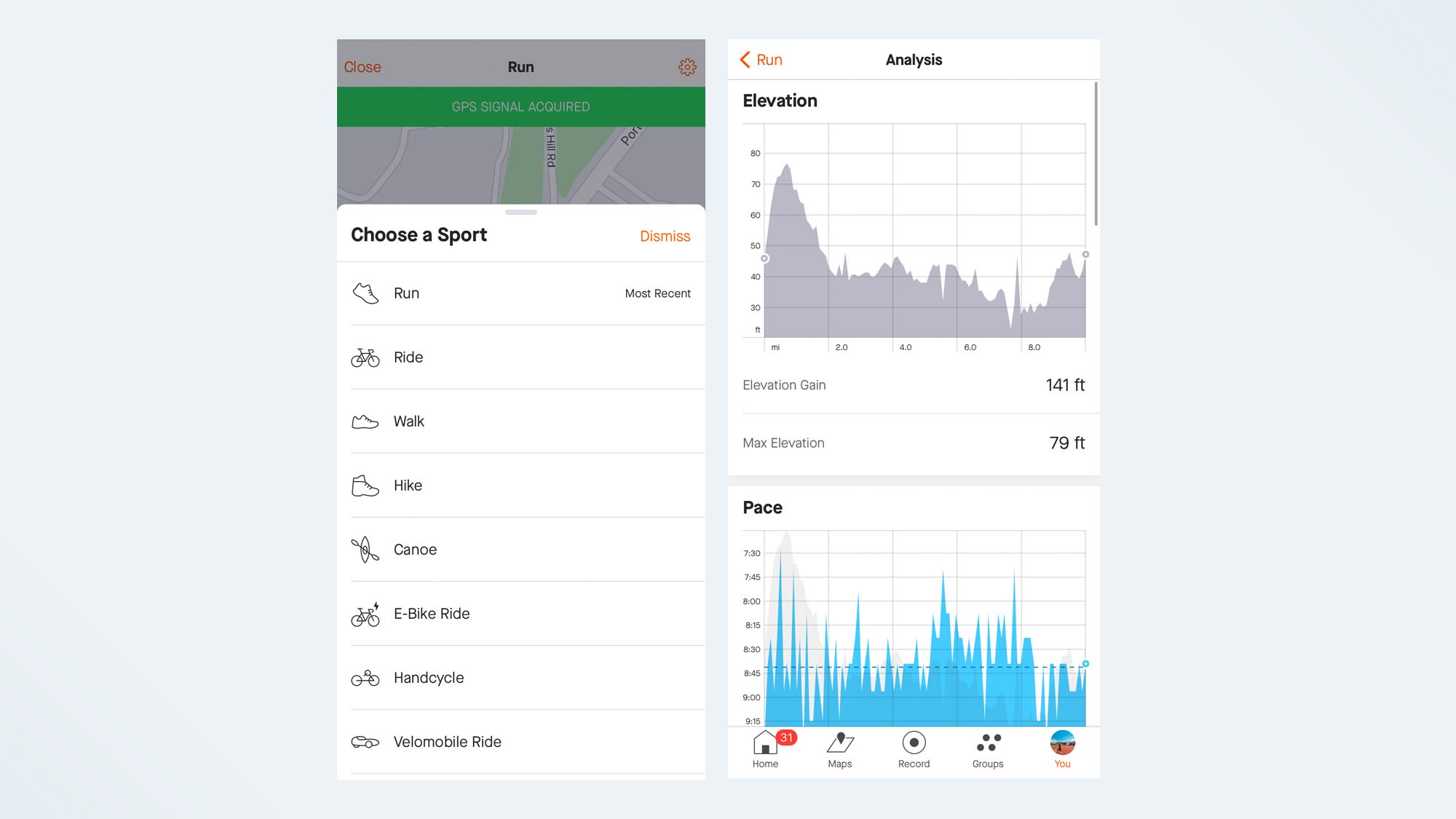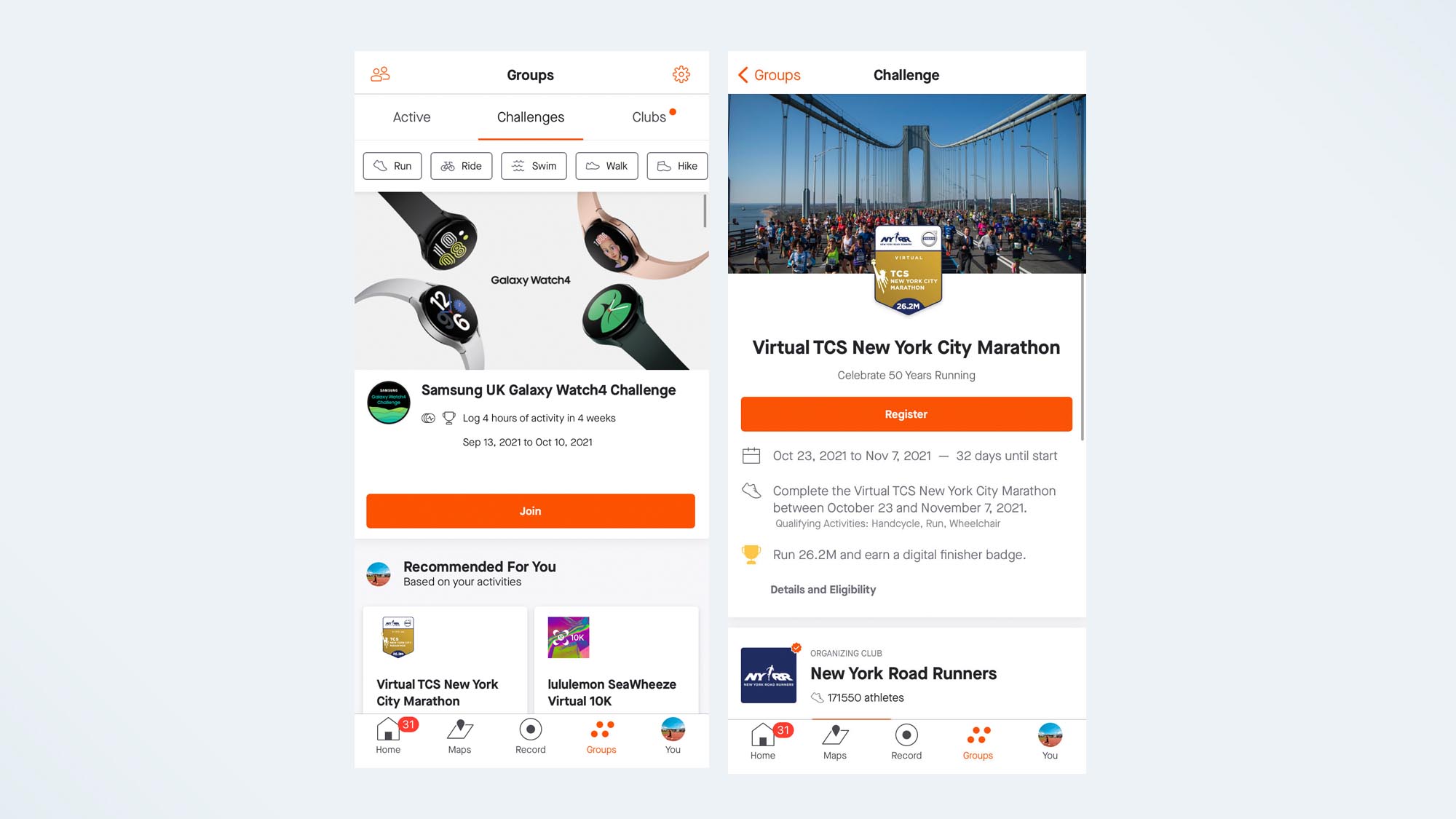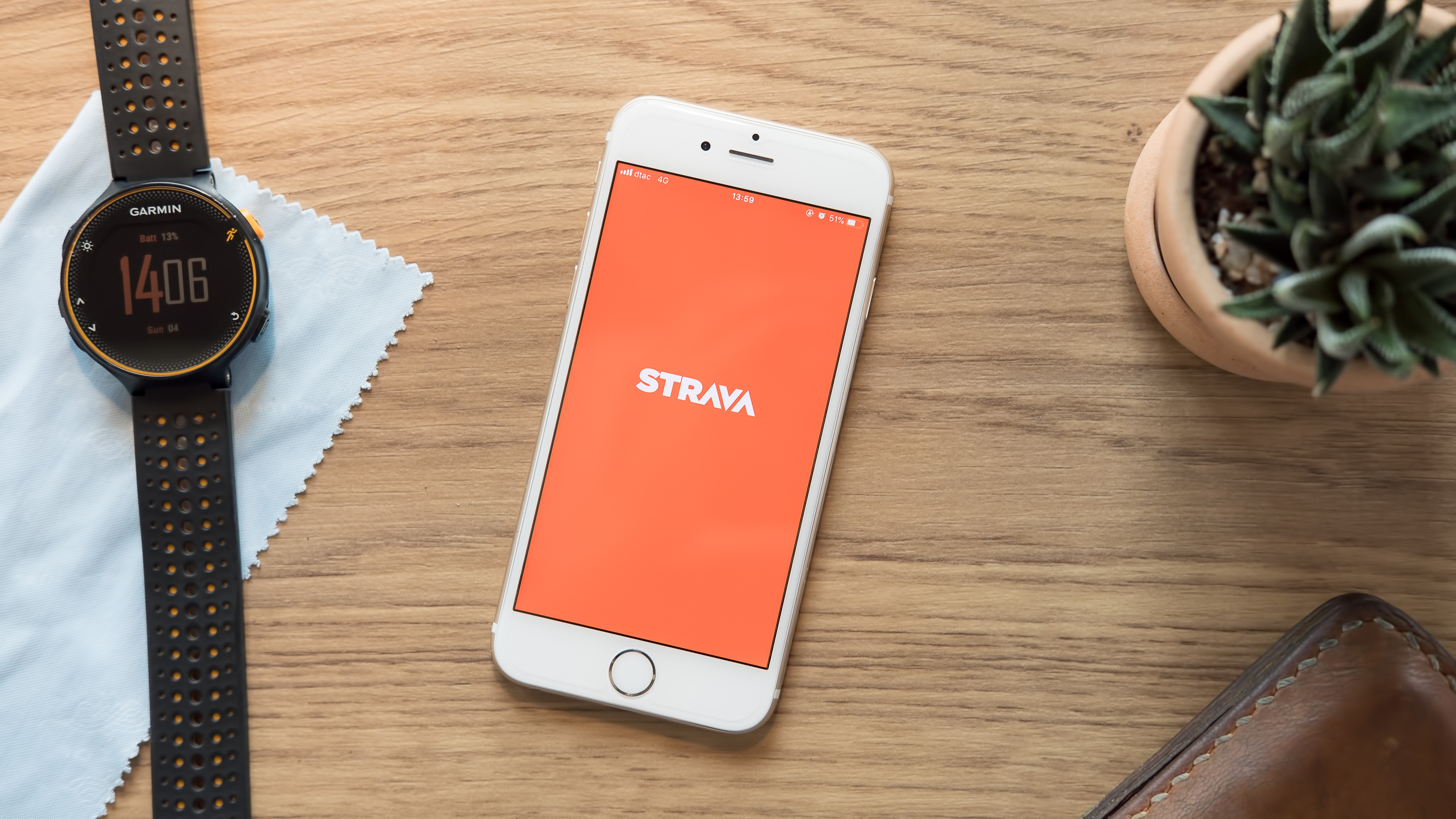Tom's Guide Verdict
Strava is our best overall running app, with plenty of handy features for runners on both the free and paid-for version.
Pros
- +
Allows tracking for multiple sports
- +
A real community vibe
- +
Users can get a 30-day trial of the Summit membership before subscribing
- +
Lets others track your location
Cons
- -
A lot of the in-depth performance analysis is only available on the paid version of the app
Why you can trust Tom's Guide
Cost: Free; Strava subscription is $5/month or $59.99/year
Compatibility: Android/iOS
Smartwatch compatible: Yes; Garmin, Polar, Suunto, wahoo, Fitbit, Apple Watch 3 and newer models, Amazfit, TomTom
Multisport tracking: 31 sports
I’m not saying if it isn’t on Strava it didn’t happen, but I have been obsessed uploading every mile I’ve run to this running app since its launch in 2009. It appeals to my slightly addictive personality — I love being able to see my weekly mileage on a graph, see all my workouts in one place and, let’s be honest, stalk other runners’ stats. It’s one of the best running apps out there and has a number of stand-out features other apps on the market lack. In this Strava review, we're going to dive into all of its features, what you get for free, and what you'll have to pay for.
- The best running apps to download right now
- The best running shoes - tried and tested
- How long do you need to hold a plank to get results?
Strava review: Free vs. paid
In 2020, Strava made some big changes to the subscription part of its platform, rebranding its premium membership and putting some of the app’s most popular features behind a paywall. To be a Strava subscriber will set you back $5 per month, or $59.99 per year, but there’s still a lot you can do on the free version of the app.
Strava is also still free to download on Android and iOS, and it’s easy to set up a profile and sync your running watch or fitness tracker to the platform.
Runners using the free version of the app will be able to see their distance, average pace, moving time, elevation gain, and calories, as well as average heart rate if they’re wearing a heart rate monitor or fitness watch. You can view your run’s splits, and see your pace, elevation, cadence, and heart rate on a chart.
Strava’s safety feature, Beacon, is also an impressive feature, which was recently made available on the free version of the app. Beacon allows you to share your Bluetooth location with up to three safety contacts so that they can see your live location during your activity. Users can edit their safety contacts and toggle Beacon on from the start activity page, using the Beacon icon.
| Row 0 - Cell 0 | Free | Paid |
| Activity tracking | Yes | Yes |
| Beacon | Yes | Yes |
| Post-workout stats | Yes: distance, pace, moving time, elevation gain, calories, heart rate, run splits | Yes: all for free offerings, plus power and advanced heart rate data |
| Social wall | Yes | Yes |
| Challenges | Yes | Yes |
| Segments | No | Yes |
| Route tool | No | Yes |
| Custom goals | No | Yes |
| Training plans | No | Yes |
| Relative effort | No | Yes |
| Personal heat maps | No | Yes |
Strava review: Subscription
Strava’s membership has some key features that some runners will find beneficial. These include:
Routes: Strava subscribers can use the Routes tool on Strava, which gives you suggestions based on where other runners in your area have clocked their miles. It’s super handy, especially when traveling, so you don’t just have to lap the local park. There’s also the option to just draw a circle around a place you’d like to explore, and Strava will build a route for you.
Segments: Segments was one element of the free app users were up in arms to lose. It basically allows you to compete with friends and local runners to ‘win’ segments of a road or route. While I’ve never been speedy enough to do this, it is cool to compare your performance, plus, Strava automatically matches previous runs on the same route so you can see your progress.
Advanced performance metrics: For really techy runners, Strava also has more in-depth running and riding metrics, including importing power and heart rate data to see how hard you’ve been working. You also have the option to set custom goals, which is something I like to do to keep myself accountable, and the training dashboard allows you to see how you’re progressing over time.
Training plans: Strava's training plans (which can be accessed on the desktop version of the site) are only available for subscribers.
Strava review: Interface
Tracking a workout on the Strava app couldn’t be easier. You simply click the record icon at the bottom panel and press start. Before clicking start, Strava gives you the option to pair to a heart rate sensor, change the sport (it’ll automatically choose the one you’ve done most recently), load up one of your saved routes and turn Beacon on.
The versatility of activities you're able to track on Strava is brilliant. Despite its reputation as an app for runners and cyclists, you can track a total of 31 different sports. The list includes hiking, canoeing, an E-Bike ride, rowing, alpine skiing, swimming, stand-up paddleboarding, and yoga. The tracking data is different for different sports and although I've not tried all of them, for most athletes the data provides is informative enough.
The app is intuitive to use, and it's easy to navigate around, join challenges and view your data. The only fiddly part is that for some activities, such as building your own route or finding a training plan, you'll need to log into the desktop app.
It's also very easy to customize the homepage feed to see the activities of the people you really care about. To do this, click on the three dots in the upper right of a person's activity. Strava gives you the option to add people to your favorites — your 'favorites' activities will automatically be at the top of your feed when you log on. There's also the option to be notified when a particular person uploads an activity, so you don't miss a chance to say well done. If you'd rather not see someone's activities anymore, but don't want to unfollow them, Strava gives you the option to mute them, so they'll no longer appear on your feed.
Strava review: Smartwatch apps

Apple Watch wearers will be pleased to hear that Strava has its own Watch app, which allows you to record your run directly into Strava and bypass the slightly fiddly syncing process between the health app and your Strava profile. The Watch app allows you to track multiple activities, customize your audio cues and auto-pause settings, and toggle Beacon, Strava’s safety feature, on and off.
Strava also has an Android app, meaning Android smartwatch owners can download and record activities into Strava straight from the watch.
There's no Strava app for Garmin, Polar, Sunnto, or Fitbit trackers, but you can easily pair your watch or tracker in the Strava app so that your activities automatically upload onto the platform. To do this, head to settings, applications, services, and devices, then connect your device to Strava.

Should your watch crash mid-run, or your treadmill record a widely inaccurate session, you can also upload an activity manually, by clicking on the small plus button in the upper left corner on the home screen.
Strava review: Groups, athletes and the social side of things
Like Fitbit and Peloton, Strava's app is known for its social aspect, where you can connect with other users to measure yourself and challenge others.
It’s easy to spend hours scrolling Strava. You can search and follow other athletes (this is what Strava calls its users), as well as joining challenges and clubs to interact with other runners. You’ll be able to see the uploads of the people you follow in your feed and give them ‘kudos’ — Strava’s version of a like or a "well done."

Of course, if you’re not interested in this competitive side of running, this side of Strava won’t be for you. You can choose not to follow anyone, and have the opportunity to make all your uploads private.
Strava review: Privacy
In 2018, Strava made headlines after it released user heatmaps, which detailed user’s activities and revealed the locations of U.S. military bases. Since then, Strava has stepped up its security settings; you now have the option to hide your activities, or only allow your followers to see them.
If you’re worried about people on the internet working out your address, Strava gives you the option to hide portions of your activity map from other Strava athletes. To do this, you can set a Privacy Zone, which will hide the radius around your home. You can set a default preference, so your activities automatically upload with this part of the run hidden, or change the visibility on individual activities. Athletes that have permission to view your posts will still be able to view the activity; what they can see will appear on your map in orange, whereas anything shown in grey is only visible to you.
From a safety perspective, it’s worth noting that when you download the app, everything will be public automatically.
Strava review: Verdict
Strava is one of the few running apps on the market that is still independent — in other words, it's not been bought by an apparel maker (like Map my Run, RunKeeper, and Runtastic all have) — not that it's the end of the world.
Strava is also a brilliant option for multisport runners who want to track all their activities in one place. When I trained for a triathlon, I loved being able to see my weekly runs, bike rides and swims, without having to switch between apps. That said, if you're looking for a completely free app that will track your runs, keep you motivated and offer coaching support, the Nike Run Club app is a great choice.
While the subscription is undoubtedly expensive, runners who are really motivated by stats and competitions might find it beneficial. Personally, I'm never going to be speedy enough to 'win' a segment of road in my local area, but I can see why that would be a motivation for some runners. I subscribe because I like the option to set personal goals, and pre-pandemic, I found the routes tool brilliant when I was in a new country or city and wanted to head out for a morning run, without spending hours plotting routes on Google or quizzing confused hotel staff.
Overall, kudos, competitions, and personal heatmaps aside, this is a popular running app for a reason — just don't blame me if you get addicted.
- Read next: The best workout apps
- Best Fitbit

Jane McGuire is Tom's Guide's Fitness editor, which means she looks after everything fitness related - from running gear to yoga mats. An avid runner, Jane has tested and reviewed fitness products for the past five years, so knows what to look for when finding a good running watch or a pair of shorts with pockets big enough for your smartphone. When she's not pounding the pavements, you'll find Jane striding round the Surrey Hills, taking far too many photos of her puppy.

